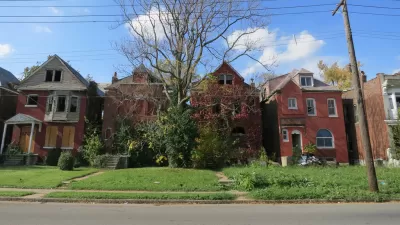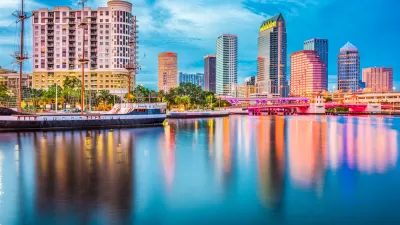A lesson for other cities as well: As long as cities give absurd subsidies to pro sports teams, pro sports teams will continue to expect absurd subsidies from cities. Case in point: St. Louis and the NFL's Rams.
Joseph Stromberg excoriates the proposal by St. Louis city and state officials to build a 64,000-seat stadium in downtown, along the Mississippi River, to entice the NFL's Rams to stay.
Stromberg also notes that Missouri Governor Jay Nixon announced a deal "with a rail agency and utility company to move train tracks to accommodate the new stadium."
Preliminary cost estimates run between $860 and $985 million, "with half the money coming from public funds."
But here's the kicker, according to Stromberg: "The facts here are clear: building this stadium would be an absolutely terrible idea, even by the low standards of publicly-funded pro sports stadiums."
Here's Stromberg's laundry list of charges against the proposal: "The project would mean paying a huge subsidy to a very profitable business that provides minimal benefits to the public — at the same time the city continues to pay off the debt from building the old Rams stadium, completed in 1995. It would take away millions away from public programs, and give them to a man worth an estimated $5.8 billion. Last, it would devour a large parcel of vacant land downtown, right on the Mississippi waterfront, to be used just ten times per year."
FULL STORY: St. Louis' plan to keep the Rams is a $400 million mistake

Study: Maui’s Plan to Convert Vacation Rentals to Long-Term Housing Could Cause Nearly $1 Billion Economic Loss
The plan would reduce visitor accommodation by 25,% resulting in 1,900 jobs lost.

North Texas Transit Leaders Tout Benefits of TOD for Growing Region
At a summit focused on transit-oriented development, policymakers discussed how North Texas’ expanded light rail system can serve as a tool for economic growth.

Why Should We Subsidize Public Transportation?
Many public transit agencies face financial stress due to rising costs, declining fare revenue, and declining subsidies. Transit advocates must provide a strong business case for increasing public transit funding.

How to Make US Trains Faster
Changes to boarding platforms and a switch to electric trains could improve U.S. passenger rail service without the added cost of high-speed rail.

Columbia’s Revitalized ‘Loop’ Is a Hub for Local Entrepreneurs
A focus on small businesses is helping a commercial corridor in Columbia, Missouri thrive.

Invasive Insect Threatens Minnesota’s Ash Forests
The Emerald Ash Borer is a rapidly spreading invasive pest threatening Minnesota’s ash trees, and homeowners are encouraged to plant diverse replacement species, avoid moving ash firewood, and monitor for signs of infestation.
Urban Design for Planners 1: Software Tools
This six-course series explores essential urban design concepts using open source software and equips planners with the tools they need to participate fully in the urban design process.
Planning for Universal Design
Learn the tools for implementing Universal Design in planning regulations.
City of Santa Clarita
Ascent Environmental
Institute for Housing and Urban Development Studies (IHS)
City of Grandview
Harvard GSD Executive Education
Toledo-Lucas County Plan Commissions
Salt Lake City
NYU Wagner Graduate School of Public Service




























